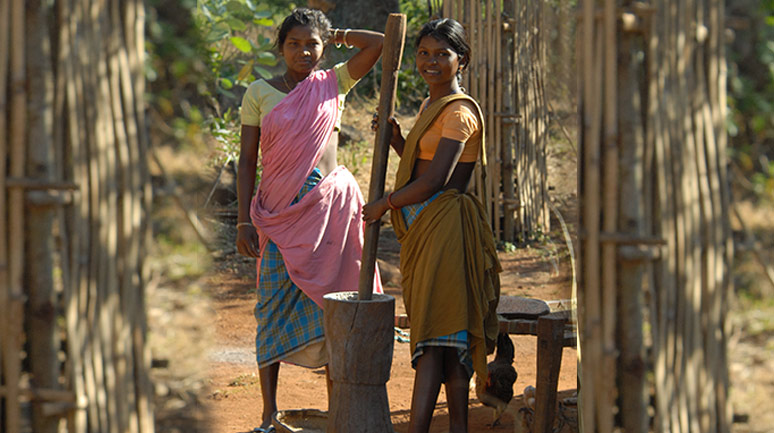Shift in Tribal Food Habits: From Sustainable to Nonsustainable


Giving up on traditional food and blindly having ‘development’ agendas in agriculture thrust on them has resulted in the tribals losing their wise and time-tested habits and practices, leading to heavy loss in health and economic terms. Today, they are neither here nor there—neither modern, ‘developed’ and prosperous nor in touch with their own indigenous crop cultivation methods and wholesome food habits
“There is a great need for the introduction of new values in our society, where bigger is not necessarily better, where slower can be faster, and where less can be more.”
T HIS ARTICLE FOCUSES ON THE factors leading to a drastic shift in the agricultural practices of the indigenous Pahariya and the Santhal tribes of Sundarpahari block, resulting in feeble dietary habits and serious health repercussions. The indigenous Pahariya and Santhal tribes earlier engaged in traditional agrarian and food gathering processes, which placed healthy and diversified food items on their platter. Now, however, such variation and diversification in theirfood no longer exist. Whereas I do describe the traditional tribal food habits with their health and nutritional aspects and compare these with newly acquired habits, the major focus of this paper is to look at the possible factors that have led to ‘the shift’ in the qualitative degradation in food patterns and its impact on the overall health of the two tribes. The Santhals are mainly agricultural tribes, with around 95 per cent of the population engaged in agrarian livelihoods. They clear the forests, till the land and produce food on it.
The Santhals are mainly agricultural tribes, with around 95 per cent of the population engaged in agrarian livelihoods. They clear the forests, till the land and produce food on it

